All about plum and apricot hybrids
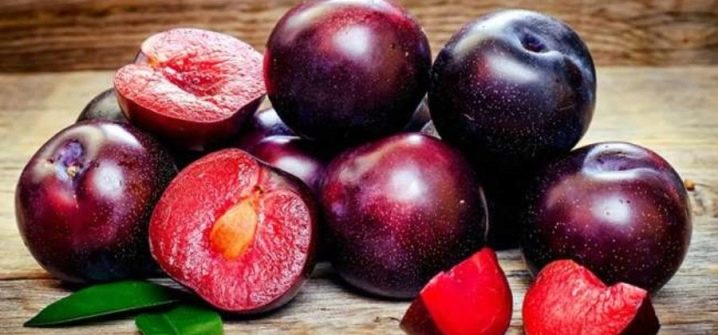
Plum and apricot are loved by many. Today it has become possible to find seedlings of hybrids that give large fruits with amazing taste. We will talk about them.
general description
A hybrid of plum and apricot was introduced in the United States back in 1989. The work was done by Floyd Seiger. It was not immediately possible to achieve a positive result, but in the end the variety turned out to be stable and hardy like a plum, and its fruits acquired a taste like apricot. The gardeners immediately liked this unique combination.
In terms of external qualities, such a tree is not tall, usually no more than 2.5 meters. The foliage is small, green. The appearance largely depends on the type of hybrid.

Types and varieties
Among the hybrids of apricot and plum, there are suitable for the Moscow region and other regions of the country.
"Plumkot" ("Pluot")
This hybrid has several varieties:
- "Triumph";
- "Alex";
- Hummingbird;
- "Crown";
- Red Velvet;
- Wei Wong.
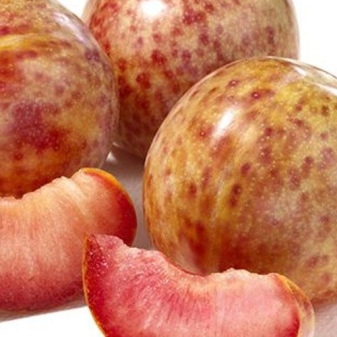
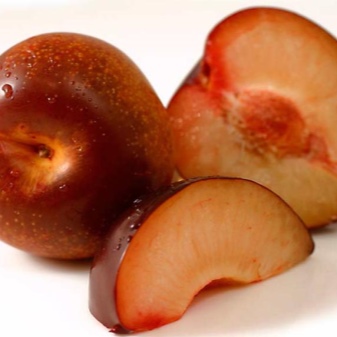
The name "Plumkot" describes a tree that exhibits the characteristics of a plum tree. If we talk about the territory of the United States, then there this hybrid is grown in California.
The fruit has a smooth skin like a plum. The color can be purple with orange spots. The pulp of such a fruit is a bright red hue, sometimes green on the outside, and yellow on the inside. There are many other shades close to pink and dark purple.
The aroma of plumkota is something between plum and apricot. The mass of one fruit is from 60 to 100 grams. They are distinguished by their bright aroma, rich taste and lack of astringency with a slight bitterness, which can sometimes be traced in plums. The skin is thin, easily torn, no sourness.
- As for the varieties, then "Alex" refers to an early maturing culture. The fruits are large, smooth, ball-shaped. The peel is pink with raspberry, the inside is dense, yellow flesh.
- Have "Hummingbird" sour taste, fruits are large, mid-season. This variety can be noted for its good frost resistance and increased disease resistance.
- "Crown" - mid-season, yellow, velvety fruits.
- "Triumph" ripens late, has a velvety skin with purple dots.
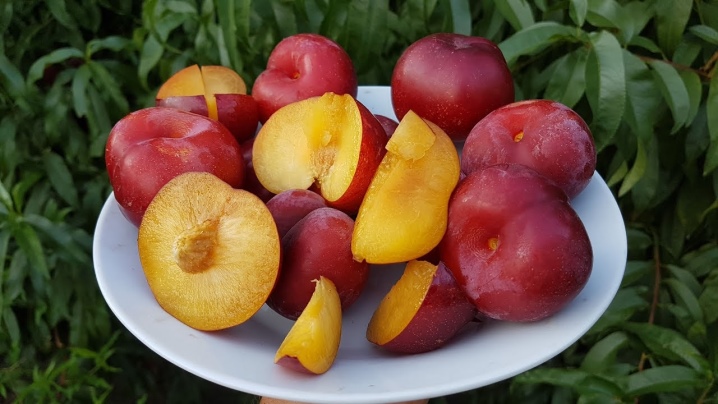
"Aprium"
This hybrid is very similar to nectarine or large apricot. In most cases, it has an orange skin with a red blush. There is not intense pubescence. The pulp inside is also orange.
If we consider different varieties, then the color of the fruit may change. For some, it is pinkish or crimson with red flesh. Compared to plumcotes, the apriums have a large bone inside. The average fruit weight is from 50 to 80 grams.
These fruits are praised for their amazing sweetness. In appearance, they are more similar to apricot, but in taste, the plum aroma predominates, and there is also a citrus note.
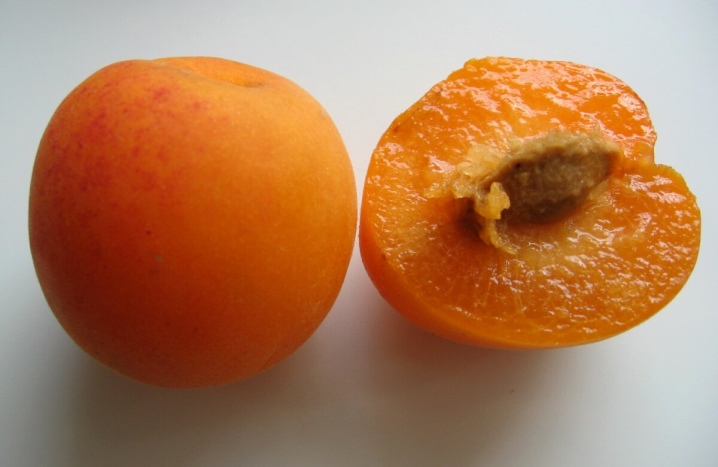
"Sharafuga"
So far, no one has figured out where such a complex name comes from. "Sharafuga" is a complex hybrid in which, in addition to apricot and plum, also a peach are involved. It has melting flesh, sweet taste, and a slight sourness. The aroma is plum and apricot. There is a small fluff on the surface of the fruit.
Color may vary. There are bright yellow fruits with a blush, and there are purple and even crimson ones. The size of the fruit can be up to 6 cm in diameter. The shape is not always spherical, sometimes it can be oval.
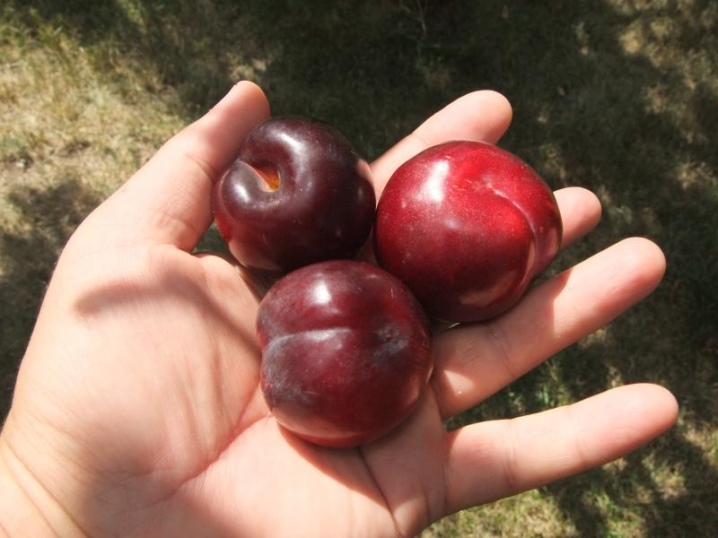
Landing
A year before planting seedlings, it is necessary to properly prepare the soil. First of all, a chemical analysis of the soil is carried out.If a low magnesium content is found in the soil and it has an acidic pH, slaked lime is used in an amount of 1 t / ha (if the soil is light), 2 t / ha if it is heavy. The hybrid grows well in soil with a pH of 6.5-7.1.
Before planting, manure is still applied at a maximum dose of 40 t / ha for autumn plowing. You can replace it with green fertilizers. It is better to use mustard, which is sown in spring (30 kg of seeds per hectare), then plowed with it.
Weeds are strong competitors for young seedlings and can also be a home for insects and disease vectors. They can be removed manually, mechanically or with herbicides.

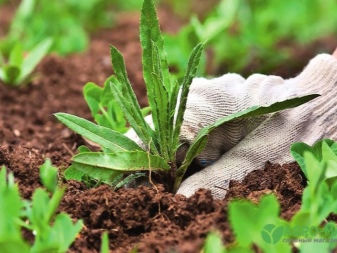
Hybrids grown in large gardens are planted at a distance of 6 x 6, 6 x 5 or 7 x 5 m. In a small area, a distance of 4 x 4 or 4 x 3 m is allowed. It should be remembered that they do not like and do not need strong pruning, therefore, it is not so easy to get the desired crown size. Typically, planting density per hectare is 500-1000.
As a rule, annual seedlings are planted, they grow quickly and gain strength in the first year. Older trees do not tolerate replanting well. Planting is carried out in the fall or spring. In hybrids, spring planting is more often chosen to avoid the risk of frostbite of seedlings in winter. If the trees are dug out of the nursery in the fall, they are planted anyway in the spring, before that they are stored in a suitable place.
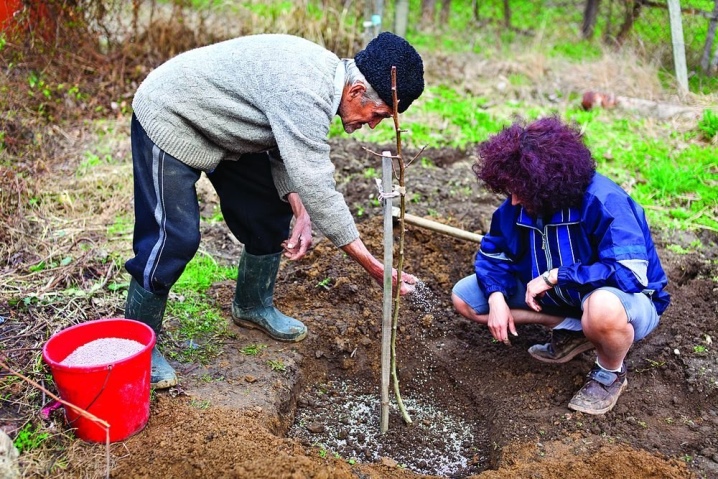
It is worth planting in spring at the turn of March and April. A delay in planting has a negative impact on the health of trees. If you plant in the fall, the tree will grow faster in the spring. Such seedlings are less susceptible to freezing, but protection is required in this case, so they are wrapped with covering material from the ground. Before planting, the condition of the root system is checked, damaged roots are removed and treated with a manganese solution.
First, they dig a hole so that the entire root system fits freely into it. Trees are planted deeper than they were planted in the nursery. The roots are covered with a mixture of soil with peat and manure. After planting, the hybrid is watered abundantly with 5-10 liters of water. Rooting is faster this way. The land can be mulched using straw, bark.
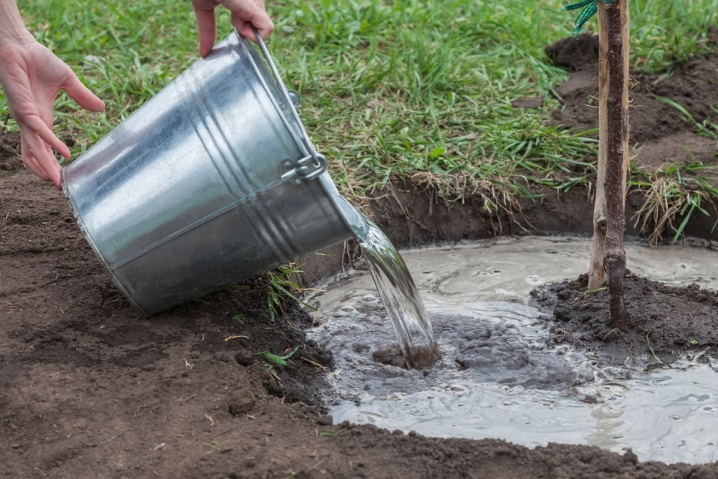
Care
Hybrids need to be cared for like regular fruit trees. They need pruning, processing, watering and fertilizing.
Sanitization
In October, it is necessary to carry out the following activities:
- collection of leaves;
- dig up the ground;
- feeding fruit trees;
- spraying against pests;
- watering.
After the leaves have fallen, they must be collected in a heap and burned. In most cases, the leaves of fruit crops are infected with pathogens, so they should not be left on compost.
Digging up the soil will improve the passage of moisture and oxygen and will eliminate pests in the soil. Lime is used to protect against sunburn. The trunk and branches will need to be whitened.
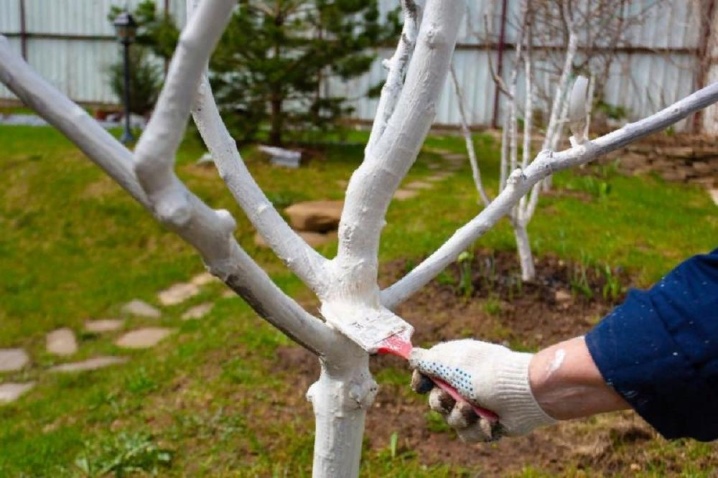
Autumn bark care involves the use of not only a lime solution, but also a rather complex composition, the purpose of which is to protect the tree from temperature extremes. The crust obeys the laws of physics, expands when heated during the day and shrinks after cooling at night. Because of this, cracks appear on the bark.
The second solution is prepared from a mixture of copper sulfate and lime. In the case of old trees, this solution is prepared with a paste to form a sticky jelly. You can also add to the composition of cow dung and clay. This mixture will form a thick layer on the trunk and act as a buffer.
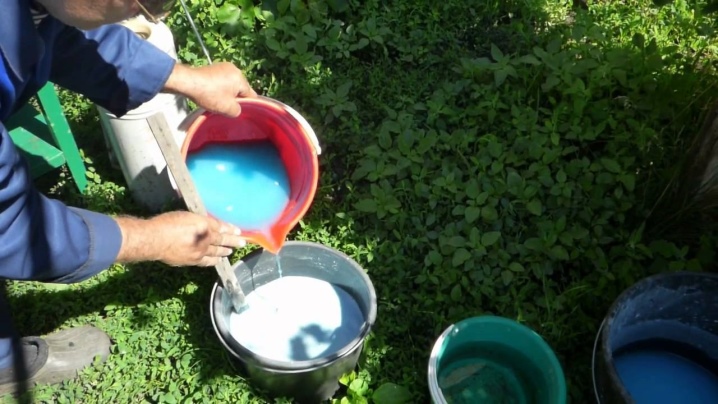
Pruning
Autumn pruning of hybrids begins almost in August. The plant must have time to prepare for wintering. In summer and spring, it is advised to sanitize, remove dead and damaged shoots.
It is imperative to cut off branches that grow incorrectly. They thicken the crown, thereby contributing to the appearance of diseases and insects. Pruning is carried out with processed inventory.
You can use a solution of manganese or bleach for treatment.

Watering
Starting in spring, young trees are regularly watered. The ground around should be moist, but not swampy or dry. Deep watering is great, so that the soil is soaked by 40 cm.To do this, simply put a hose next to it and after a few hours look, if the water no longer leaves, then there is enough moisture. The next watering is carried out in a week, in case of severe drought - in 3-4 days.
Fall watering is also worth practicing. It is carried out two weeks before the first frost. In parallel with the preparation for winter, irrigation of fruit trees is necessary. During the fruiting period, the tree needs a lot of moisture, so the roots work in pump mode. In the fall, after harvesting, it is necessary to restore the water balance of the plant itself. If it rains almost every day in summer, you do not need to worry, in all other cases it will be necessary to produce high-quality watering.

The time and amount of water used depends on the weather conditions in the current year. If the year is rainy, the amount of watering and the amount of water used is reduced. In the dry season, moisture is applied more frequently and the volume increases.
The water pressure is regulated so that it does not overflow outside the barrel circle. In Russia, such a drought happens very rarely, so it is usually enough to water the plant for half an hour.
After good watering, the soil under the plant must be mulched. Fertilization and irrigation can be combined.
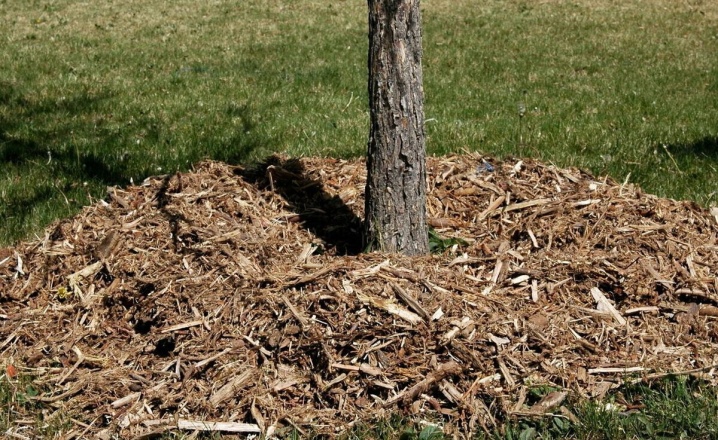
Fertilizers
To improve the quality of the soil structure, it is advisable to use natural fertilizers such as compost or manure. This additive always has a positive effect on soil fertility.
The dose to be applied to the soil depends on whether there is grass around the tree. If weeds grow under the hybrid, it is necessary to add a double dose of nitrogen to the soil, since the weeds consume this element in large quantities.
It is necessary to introduce nitrogen as a top dressing in early spring, when the soil has already warmed up, or a little later with the appearance of the first greenery. The leaves are sprayed with a urea solution, this is done in three stages: when the buds are noticed, when the trees are blooming and after flowering ends.
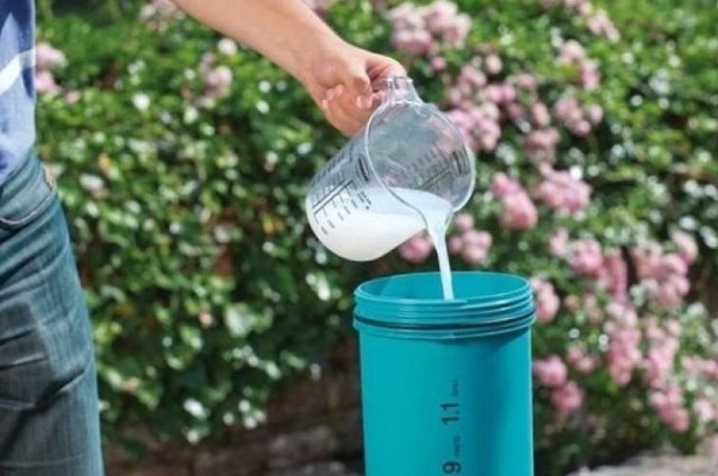
In acidic soil, there is always a phosphorus deficiency. In this case, it is recommended to use slaked lime to reduce acidity. In large areas where trees are already bearing fruit, it is better to apply phosphorus deep into the soil. In this case, we are talking about superphosphate, which can be simple or triple.
Potassium should be applied at a dosage of 50-200 kg per hectare. If the surface of the soil is covered with a lawn, you need to apply 30% more. Feeding the plants with this element should be started in early spring and finished in late autumn.
Magnesium deficiency is commonly seen in young orchards where soil levels drop below pH 5.5. To solve the problem comprehensively, it is best to use complex calcium-magnesium supplements. Magnesium is applied at a dose of 60 to 120 kg MgO per hectare. Fertilizer is applied from early spring to late autumn.
Magnesium foliar application is necessary when there was a deficiency of this element in the leaves last year. The procedure is carried out in three stages: during the period of budding, flowering and after the leaves fall. The dose is 10-20 kg per hectare.
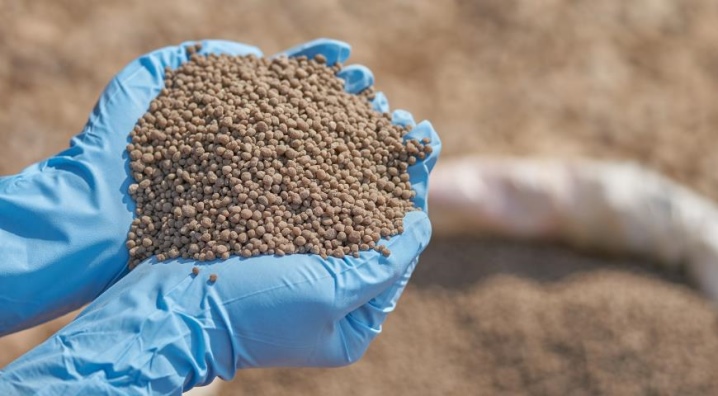
Disease treatment
Much attention should be paid to the procedure for processing trees during flowering and fruit setting. Damage by insects and diseases at this time can directly affect a significant decrease in the size and quality of the crop.
To protect hybrids from pests and diseases, fungicides and insecticides are used. In early spring, it is better to use a solution of potassium permanganate for spraying. Each tree will require 3 buckets of medium strength solution.
Processing stumps, cuts should be carried out in September using copper sulfate. In September, only the trunks of fruit trees are processed, in the spring - the entire plant.
Spraying of fruit trees should be carried out in the evening, on moderately warm, windless days. This will reduce the loss of the drug and the transfer of substances to other crops. The work is performed in the evening, after the bees have flown around. The procedures are performed from the beginning of flowering. If necessary, it can be repeated every 7-14 days until the beginning of fruit ripening.
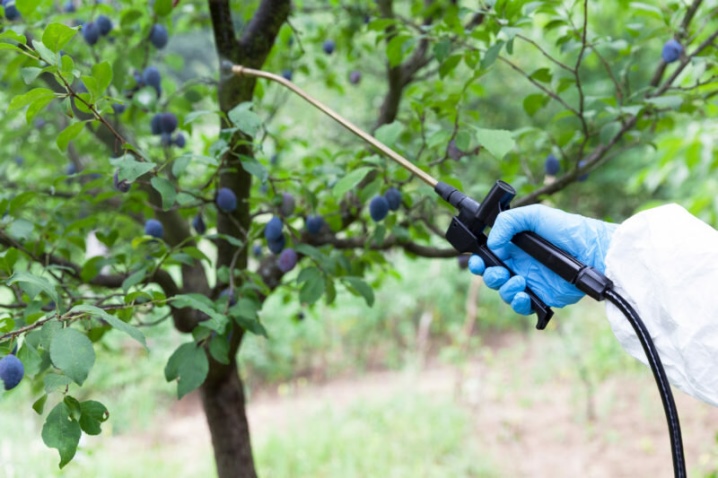











The comment was sent successfully.